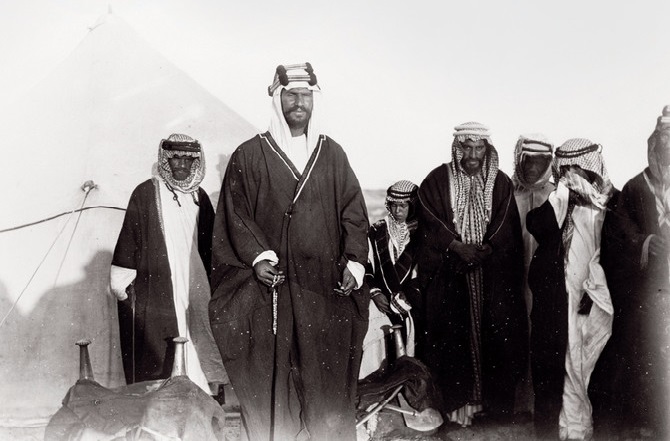In this section, we deemed it fitting to take a survey of the life of Muhammad ibn ’Abd al-Wahhab, known as the Shaykh, and Muhammad Sa’ud.
The sons and grandsons of the Shaykh are still living in the Arabia, some of whom are known by the family name, “Al ash-Shaykh”. The children of Muhammad Al as-Sa’ud some of whom are holding the reins of government in Arabia are known as “al Sa’ud”. The country had been known before as “Hijaz”, but it was changed into the “Kingdom of Saudi Arabia”{al Mamlakah al-’Arabiyyah Sa’udiyyah} during the reign of King ’Abd al-’Aziz.
Shaykh Muhammad ibn ‘Abd al Wahhab came from the region of Najd who was born in 1114 AH in one of the cities of Najd named as ”’Ayniyyah”. His father, Shaykh ’Abd al-Wahhab, was a scholar {’alim} and the judge { qadi} of that region. As such, the creed of Shaykh Muhammad had been ascribed to his father. After learning the basics of religion from his father, Shaykh Muhammad went to Medina and learned from the ’ulama’ of that region.
Due to his personal interpretations of some issues regarding belief and his opposition to the ’ulama’ of Medina, he was expelled from the city. He then went to Iraq where he stayed in Basrah. In that city he got acquainted with a person named Shaykh Muhammad Majmu’i and adopted his ideas. Finally, the two believed in a certain creed.
The other ’ulama’ of Basrah and the believers of the region that were mainly of Iranian origin, had opposed him and ousted him from Basrah.
When Shaykh Muhammad was driven out of Basrah, he proceeded to Damascus, which had a pleasant climate, but because of his unusual belief and difficulties in life he was unable to remain there. Since he could not return to Medina or Mecca, he went back to the Najd of his father, Shaykh ’Abd al-Wahhab, who was then still the ’a lim of the region.
The Shaykh had a brother named Shaykh Sulayman ibn ‘Abd al-Wahhab who was at loggerheads with him in terms of belief.
His brother was the first person to write a book refuting his doctrines. His father also opposed him and sided with Shaykh Sulayman. In addition to the opposition of his father and brother, he also faced the opposition of ’ulama’, and this dispute continued until the death of his father.
Source:
A New Analysis of Wahhabi Doctrines
By: Muhammad Husayn Ibrahimi
ABWA Publishing and Printing Center
[P. 12-13].

